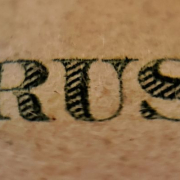Foreign trusts are not an issue per se. Nor are resident trusts. It really depends.
Foreign Trusts
When do you want to be a foreign trust and when not? How does Div 6 ITAA 1936 pull a foreign trust into the Australian tax system? And how can s99B and s99C ITAA 1936 have disastrous consequences for you as an Australian beneficiary?
These are just some of the questions Andrew Henshaw of Velocity Legal in Melbourne discusses with you in this episode. Here is what we learned but please listen in as Andrew explains all this much better than we ever could.
To listen while you drive, walk, or work, just access the episode through a free podcast app on your mobile phone.
Foreign Trusts
A foreign trust is any trust that is not a resident trust. Or in other words: A trust is always one of two things, either a resident trust or a foreign trust. There is no half in between – no ‘half pregnant’.
Foreign v Resident
Whether a trust is a resident or not can make a big difference in your tax bill. But a foreign trust is not necessarily better than a resident trust. It all depends.
A foreign trust for example doesn’t qualify for the 50% CGT discount. So if a foreign trust holds Taxable Australian Property (‘TAP’), its Australian beneficiaries would not receive the 50% CGT discount.
But if a foreign trust holds substantial non-TAP assets, then it is better to stay a foreign trust and to keep all these assets out of the Australian tax net, apart from distributions to Australian residents.
So it all depends.
TAP v TARP
There is TAP as in Taxable Australian Property. And then there is TARP as in Taxable Australian Real Property. What is the difference?
TARP is a subcategory of TAP. TAP consists of:
- Taxable Australian Real Property (TARP)
- Indirect interests in TARP
- Business assets of a PE in Australia
- Option or right to acquire any of the above.
So all TARP is TAP. But not all TAP is TARP.
Ordinary Income and CGT
When looking at foreign and resident trusts, you always have to distinguish between ordinary income and capital gains. A trust might be a resident trust for ordinary income but a non-resident trust for CGT purposes and vice versa.
Resident Trust
To determine the residency of a trust, you need to look at the trustees. With individual trustees, any one of them can trigger residency. With a corporate trustee – similar to a company – it all depends on where the trust’s Central Management and Control (‘CMC’) is.
In other words, a foreign trust becomes a resident trust for the entire year as soon as:
1 – At least one individual trustee becomes an Australian tax resident for at least one day of the year; or
2 – The trust’s Central Management and Control (‘CMC’) is in Australia for at least one day of the year.
Migration to Australia and overseas inheritances are the two most common trigger points that turn a foreign trust into a resident one.
Individual Trustee
If an individual trustee becomes a tax resident of Australia for even just one day of the year, the trust becomes a resident trust for that tax year.
So whether an individual trustee turns a trust into a resident trust, depends on the four residency tests for individuals:
1 – Resides Test
2 – Domicile Test
3 – 183-Day Test
4 – Commonwealth Superannuation Test
We covered these tests in detail in episode 5 Residency Rules for Individuals and Companies.
Corporate Trustee
For a corporate trustee, it all depends on the company’s and hence the trust’s Central Management and Control (‘CMC’).
The moment a corporate trustee has its CMC in Australia for even just one day, the trust becomes a resident trust for the full tax year.
Central management and control is about the control and direction of operations. It does not refer to the physical location of the control. So you can have CMC in more than one location. [TR 2018/5]
The rules around CMC are complicated. First, there was TR 2004/15, then there was the Bywater Case that resulted in the withdrawal of TR 2004/15 and the issue of TR 2018/5 with PCG 2018/9 in tow. But TR 2018/5 doesn’t give the certainty TR 2004/15 gave, so the May 2023 budget promised more clarity to come but still waiting.
Resident Trust v Foreign Trust
Per s95 ITAA 1936, all income of a resident trust is taxable in Australia. Even if all assets are overseas and all beneficiaries are non-residents, the mere fact that the trust is a resident pulls all income into the Australian tax net.
So let’s say a trust has an income of AUD 1m, one resident beneficiary and nine non-resident beneficiaries and a 1/10 distribution to all.
If this trust is a resident trust, the entire AUD 1m would be taxable in Australia, even though only AUD 100k goes to a beneficiary in Australia.
But… if the trust qualifies as a non-resident trust, then the distributions to the nine non-resident beneficiaries are no longer taxable in Australia. Only AUD 100k distributed to the one resident beneficiary is taxable in Australia per s97 ITAA 1936.
Can you now see why foreign trusts often fight tooth and nail to stay non-resident?
As a non-resident trust the trust itself and all non-resident beneficiaries are safe. But ….if you are the Australian resident beneficiary for even one day of the year, you are not.
s99B and s99C loom large at the horizon, coming for you.
s99B (1) ITAA 1936
The big danger for resident beneficiaries of a foreign trust is s99B. Yes, the trust is a foreign trust, and as such outside the Australian tax net. But anything that is distributed to an Australian resident and hasn’t been taxed yet, becomes taxable under s99B.
The title of s99B is “Receipt of trust income not previously subject to tax” and that really says it all. So any payment or mere present entitlement you receive from a foreign trust that hasn’t been taxed yet under s97 gets caught by s99B.
Here is s99B (1) itself:
“Where, at any time during a year of income, an amount, being property of a trust estate, is paid to, or applied for the benefit of, a beneficiary of the trust estate who was a resident at any time during the year of income, the assessable income of the beneficiary of the year of income shall, subject to subsection (2), include that amount.”
So take note of the following words:
- “or applied for the benefit of”: so you can’t avoid the income by postponing payment. A present entitlement is enough. It doesn’t need to get paid.
- “at any time during the year of income”: So being a resident for one day – or even an hour of the year – is enough for s99B to apply.
- “subject to subsection (2)”: So s99B (1) starts with all in, but then come the exclusions in subsection (2). And it is these exclusions we will look at next. But first, let’s quickly look at the Explanatory Memorandum.
99B(2) ITAA 1936
Most of the exclusions in subsection (2) are about income that has already been taxed. If income has already been included in assessable income, then s99B won’t tax it again. Beyond that the only other exclusion is corpus. If an amount has been contributed to the trust as corpus, then s99B won’t tax it.
So here is the list of exclusions listed in subsection (2). The following income is excluded from being assessable income under s99B (1):
(a) corpus (unless the amount would have been assessable income, if derived by a resident taxpayer);
(b) amounts that would be non-assessable (if derived by an Australian resident);
(ba) non-assessable non-exempt income because of s802- 17 ITAA 1997* aka conduit foreign income;
(ci) amounts included in assessable income per s97 ITAA 1936;
(cii) amounts already assessed to the trustee (98, 99, 99A);
(ciii) amounts already assessed to the trustee of another trust (98 (4))
(d and e) amounts already assessed under the transferor trust rules (s102 AAZD ITAA 1936) become NANE.
Separate Bucket
The problem with s99B is that s99B captures puts its income into a separate bucket. So not in the ordinary income bucket. And not in the capital gains bucket. But into a third s99B bucket.
So you can’t offset the income in the s99B bucket with any losses in the other two buckets.
Let’s say you have an AUD 1m ordinary loss, an AUD 1m capital loss, and an AUD 1m s99B gain. The AUD 1m s99B gain should offset with either the ordinary loss or the capital loss with no tax to pay, right?
Wrong. You get an income tax loss carryforward of AUD 1m and a capital loss carryforward of AUD 1m, but you pay full tax on the s99B gain. That is AUD 450k of tax you thought you didn’t have to pay. Can you now see why s99B is so dangerous?
MORE
Disclaimer: Tax Talks does not provide financial or tax advice. All information on Tax Talks is of a general nature only and might no longer be up to date or correct. You should seek professional accredited tax and financial advice when considering whether the information is suitable to your or your client’s circumstances.
Last Updated on 14 August 2023
Tax Talks spoke to Andrew Henshaw - Director at Velocity Legal - for more details.







